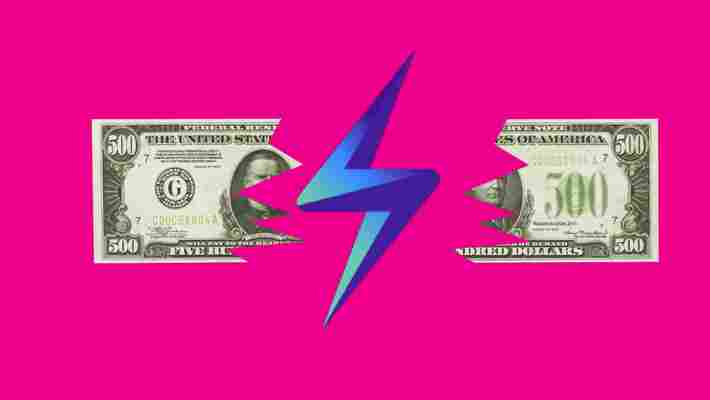Developers are finding new fun ways to test blockchain technology.

Software engineer João Almeida has created Poketoshi, a platform that lets you play Nintendo’s iconic game Pokémon via the Lightning Network.
The game is hosted on live stream video platform Twitch and works just like the rest of ‘Twitch Plays Pokémon’ games. The games work by reading commands entered into the chat room by users. In Poketoshi, the commands are instead entered through a Lightning-enabled virtual controller.
The users can enter a set of commands through the controller and have to pay 10 Satoshi per command through Lightning Network. The payments are made through OpenNode , a Lightning-enabled Bitcoin payment processor for merchants.
Almeida shared a video recording of him paying the game:
It is worth noting that Lightning Network doesn’t make the user-experience of playing the game any better. The platform is just aimed at showing the utility of LN in enabling fast and cheap transactions.
For those who do not know, Lightning Network is an additional layer that sits on top of a cryptocurrency’s blockchain to make the transactions faster and cheaper. While the technology is still in testing, the early results are promising. The network’s total capacity crossed $150,000 in April.
There has been a long-standing rivalry between Lightning Network and Bitcoin Cash (BCH) proponents and Poketoshi users didn’t stop from taking digs at the Bitcoin hard fork during the gameplay either. Many users chose to name their in-game rival ‘BCASH,’ and shared screenshots on Twitter:
This is not the first time that a developer has created a fun way of testing the Lightning Network. One developer recently built a Lightning-powered drawing board and another one created a candy dispenser that lets users pay with via Lightning Network.
It takes three times more energy to mine Bitcoin than gold
According to newly published research , mining cryptocurrency takes nearly twice as much energy than mining gold, platinum, and copper. Bitcoin on its own, needs three times as much energy to mine than compared to gold.

Researchers from the Oak Ridge Institute for Science and Education in Cincinnati tracked the daily energy demand and hashrate of Bitcoin, Ethereum, Litecoin, and Monero between 1st January 2016 to 30th June 2018.
The researchers then used the average daily market prices of each cryptocurrency – and the respective rewards gained from successfully mining a block – to calculate how much energy it takes to generate one US dollar worth of each respective cryptocurrency.
The study found that Bitcoin, Ethereum, Litecoin, and Monero consumed 17, 7, 7, and 14 million joules of energy, respectively, to mine $1 worth of each cryptocurrency.
To put this into some kind of context, it would take 1 million joules of energy to lift about 110,000 tons, 1 meter off the ground. So yeah, that’s a lot of energy.
In comparison to the conventional mining of metals, copper requires just 4MJ, gold requires 5MJ, and platinum needs 9MJ of energy to mine $1 worth of the precious metal.
Over an 18 month period, the researchers also noticed that the hashrate of the four tracked cryptocurrencies has, on average, continued to increase. Even though the cryptocurrency market was highly volatile across the same period, it seems to suggest the energy requirements of cryptocurrency mining will continue to increase irrespective of each coin’s price.
Sadly, with the energy demands of cryptocurrency mining so high and continuing to increase, it seems the hobbyist miner won’t be turning a profit anytime soon.
Researchers also suggest that mining these four cryptocurrencies is responsible for between three and 16 million tons of CO2 emissions. That is quite a broad estimate, and it should be noted this study was completed using publicly available information. Researchers have not considered how miners of these cryptocurrencies source their electricity, and at what rate they are purchasing it.
Cryptocurrency mining has been at the forefront of environmental conversations, receiving various criticisms that it is inefficient, uses too much power , and is generally bad for the environment .
Sure, mining cryptocurrencies takes a lot of energy, but what matters more is where that energy is coming from. In some cases, the immense energy requirements of cryptocurrency mining is encouraging innovation into green renewable energy sources.
Lightning Network has 1% success rate with transactions larger than $200, controversial research says
Lightning Network, a technology often touted as the solution to Bitcoin’s scalability problem, has been growing leaps and bounds in popularity in the recent months in spite of being at a nascent stage. The technology has been tested successfully for processing micro-transactions swiftly. But it seems Lightning Network still struggles with transferring bigger amounts.

Lightning Network can only ensure 100 percent success rate for transactions of up to three cents, a report by cryptocurrency research firm Diar suggests .
The publication found that anytime someone uses the Lightning Network to transfer a sum larger than $5, there is 50-percent chance the transaction could fall through. The chance of failure is even more striking with bigger amounts. Sending $490 – the maximum amount currently allowed on the network – has only one-percent chance of success.
Diar sourced the data from Reddit user YeOldDoc who used lnmainnet.gabenin to plot the probability of successfully routing a payment between random nodes on the Lightning Network. YeOldDoc made the calculations based on how many nodes have the capacity to route a payment of that size.
One interesting takeaway from the Diar research is that despite its rapid channel growth, Lightning Network has yet to improve the transaction efficiency of its system. As pointed out by Cornell University computer science professor Emin Gün Sirer, the number of Lightning Network routes has grown 10 times in the past five months, but the probability of successful routing has not increased at all.
Developers have been implementing Lightning Network payments for fun activities online in order to test its utility for micro-transactions. This includes playing Pokemon with it, buying candies , or doodling penises on a graffiti board . But, we are yet to see any implementation for payments above a few dollars.
The total network capacity of Lightning Network crossed $150,000 in April with more than 2,000 active running nodes and 6,600 channels. At the time of writing, the total network capacity seems to be still nearly the same, with more than 2,500 nodes and 7,800 channels.
Lightning Network acts as a “second layer” to a payments blockchain, allowing for faster transactions with very little transaction fees. The Network works by creating “channels” between nodes.
Any two nodes on the Lightning Network can agree to hold their coins on a common wallet. The channel is essentially a multi-sig wallet — where the consent of both parties are required before funds can be moved out. This wallet is then registered on the blockchain.
This process means that the wallet now acts as a ‘payments channel,’ which can be used to pay the cryptocurrency without requiring to register the transaction on the blockchain. When they finally close the channel, the resulted transaction is recorded on the blockchain as one transaction. This allows the two parties to carry out swift transactions with low fees, as their transactions don’t have to wait for miner confirmations every time.
This doesn’t mean that you need to create a channel every time you want to transact with someone. You can use existing channels of the people you are connected with.
But there is a catch. For the transaction to go through, everyone involved in the transaction will have to be online. This includes you, the person you are sending the money to, and, if you are using someone else’s channel, then they have to be online as well.
In addition, the channel — you are making the transaction through — should have enough funds to support your transaction, that is, twice the amount of the transaction value.
This is what gives rise to the payments not going through for larger amounts.
Through current means, if you want Lightning Network to process large transactions, you need nodes that can create larger channels that can always be online.
Clearly, individuals are less likely to fit the bill.
Large cryptocurrency exchanges can create Lightning channels to increase its network capacity and increase the probability of transactions going through. But as Diar points out, opening up a Lightning channel will likely land them in regulatory trouble.
The exchanges are required to perform know-your-customer (KYC) and anti-money-laundering (AML) checks on users of their platforms. Through Lightning Network, while you can do this for channel creators, they can’t control where the actual transactions are routed.
It is important to remember that the technology is still in its nascent stage. With subsequent improvements, and an increased number of nodes (therefore, channels), it might ensure that Bitcoin lives up to its creator’s vision as a peer-to-peer electronic form of money that can be used for everyday transactions.
Update 16:30 UTC, June 26: Lightning Labs co-founder and chief technology officer Olaoluwa Osuntokun has since downplayed the methodology used in Diar’s research.
“Based on what I can find with respect to methodology used to generate these metrics, […] the model itself is flawed, and produces flawed metrics,” he told Hard Fork over email.
Among other things, Osuntokun noted that the research failed to factor out Lightning Network channels that simply do not offer support for transactions larger than their specified amount. “When one takes into account how Lightning Network works, this is akin to saying ’the probability of room that fits 10 people will be able to fit 50 people is 0 [percent],’” he said.
(For the record, Diar and the Redditor who originally provided the data claim they did remove nodes with insufficient capacity from their samples.)
Another issue in Diar’s methodology is that it assumes the maximum transferrable amount is $490. Osuntokun has clarified that the maximum payment size on the Lightning Network currently stands at 4,294,967 satoshis – or about $260 at the time of writing.
“By not removing channels which have a total capacity that’s less than the target amount to be sent, the results of the model are greatly skewed, as they include nonsense data points,” Osuntokun added.
Update 08:40 UTC, July 2: In a response to the Lightning Network development team, Diar has since defended the legitimacy of its research. The full response can be found here .
Speaking to Hard Fork, Lightning Labs CEO and co-founder Elizabeth Stark expressed skepticism at the validity of Diar’s research model, referring to the data set as “ flawed .”
In the interest of full disclosure , we’ve also decided to include Osuntokun’s full unedited response to Hard Fork from June 26:











